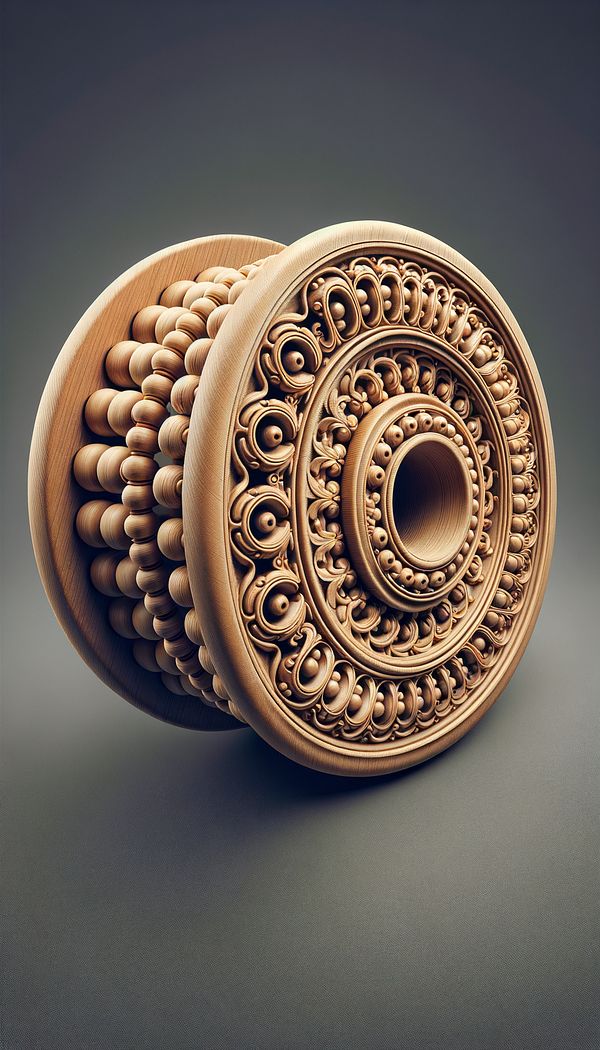What is a Spool Bead?
A decorative small wooden molding featuring a series of round beads.
Description
A Spool Bead is a decorative element found in both furniture and architecture. It gets its name from its resemblance to a row of thread spools lined up next to each other. This type of bead is used primarily as a decorative feature to add visual interest and texture to a piece or space. It is typically crafted from wood and features a series of round, bead-like shapes that are connected together to form a continuous strip. Spool Bead molding is often used to embellish the edges of furniture, door frames, and baseboards, bringing a subtle yet distinctive decorative touch to the piece or room.
In interior design, Spool Bead moldings can contribute significantly to the aesthetic of a room by providing intricate details that complement the overall design theme. Their historical significance and intricate appearance make them particularly well-suited for traditional, vintage, or classical design styles, although they can also be incorporated into more contemporary settings for a touch of classic charm. The use of Spool Beads in design demonstrates an appreciation for craftsmanship and detail, and it can enhance the elegance and sophistication of a space.
Usage
Spool Bead moldings are often found in the design of high-end furniture pieces such as cabinets, chest of drawers, and bed frames. Additionally, they can be used in architectural details around door frames, along stair banisters, and as part of the baseboard or crown molding in traditional and classical homes.
FAQs
-
Can Spool Bead be painted or stained?
Yes, Spool Bead can be painted or stained to match or complement the surrounding decor. Painting or staining enhances its visual appeal and allows it to blend seamlessly with the interior design.
-
Is Spool Bead suitable for contemporary interiors?
While traditionally associated with classical or vintage styles, Spool Bead can be adapted for contemporary interiors as a decorative accent that adds historical charm and texture.
-
What materials are used to make Spool Bead?
Spool Bead is predominantly made from wood, but it can also be crafted from other materials such as plaster or polyurethane for specific design needs or preferences.
-
How should Spool Bead be installed?
Installation of Spool Bead typically involves careful measurement and cutting to fit the desired area, followed by securing it in place with nails or adhesive. It is recommended to consult with a professional if you are unfamiliar with this process.
-
Where else can Spool Bead be used besides furniture and architecture?
Beyond furniture and architectural details, Spool Bead can also be used in decorative objects, frame embellishments, and even in DIY craft projects for a textured, decorative touch.
Practical Application
When incorporating Spool Bead into your design, consider the overall style and theme of your space. For a cohesive look, paint or stain the Spool Bead to match or complement your existing decor. Use it sparingly as an accent to avoid overwhelming the space, and consider its historical charm and craftsmanship as ways to enhance the elegance and sophistication of your room.
-
Architectural Elements199 articles
-
Furniture Types599 articles
-
Decorative Techniques322 articles
-
Historical Periods & Movements150 articles
-
Fabrication & Craftsmanship133 articles
-
Queen AnneAn architectural and furniture design style that originated in the late 17th and early 18th centuries, characterized by its elegant and ornate features.
-
Cocktail TableA cocktail table is a low table designed primarily for the living room for the placement of drinks, books, and decorative items.
-
Early RenaissanceThe Early Renaissance is a period in art and architecture characterized by a revival of Classical influences and a focus on symmetry, proportion, and harmony.
-
FarmhouseFarmhouse is a design style that blends rustic and modern elements to create a cozy, welcoming atmosphere.
-
AcrylicAcrylic is a synthetic material known for its durability and versatility in interior design.
